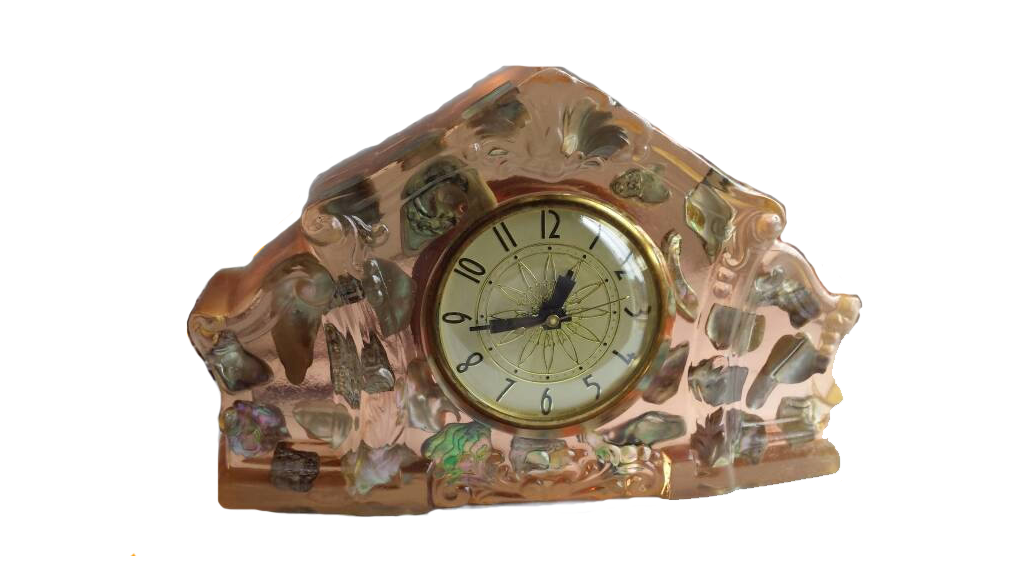Vomit clocks, individually distinct, often vary drastically in style and presentation. Some are filled with rocks and others glass, some are bold colors while others take more muted tones, and some take the traditional clock shape while others are fashioned into unconventional figures. However, the clocks often share one commonality: the mechanic clock parts that keep them telling time.
Many of the parts and machinery commonly found in vomit clocks are made from the same manufacturer: Lanshire Clock and Instrument Corporation.

American Time Lanshire Clock, from a selling at WorthPoint

An example of a clock made with Lanshire parts, from the Vomit Clock Museum personal collection
On May 1st 1944*, Lanshire Clock and Instrument Corporation was founded in Illinois by Joseph Landgraf. Landgraf, a savvy businessman, also founded Joseph Landgraf Inc., a typewriter spool manufacturer. He registered a trademark for Build O Clock, an electric unassembled clock kit, in 1954 and grew his Chicago clock company to produce clocks supplied all across the country – from ready-to-buy ornamental clocks to producing the parts and machinery used in craft kits such as those for vomit clocks.
[*The exact date is unverified by primary source material, but this date has been referenced several times across the internet]

A 1950 newspaper clipping, detailing Lanshire clocks for sale. Clipped from the Lubbock Evening Journal, Lubbock, Texas, 24 Nov 1950, Fri, Page 12
Many of the clocks Lanshire produced were distinctive in their style and statement. While some looked like traditional mantel clocks for the mid-1900s era, others were created with unique artistic statements. A common Lanshire clock design includes the addition of forest animals- typically a pair of owls and fawns perched on top or curled around the clock face.

Picture of Lanshire Clock from ebay listing
Another popular type of Lanshire clock was constructed of intricate and decadent porcelain designs. These clocks, designed to look expensive and elegant, were often trimmed with gold and polished to shimmering perfection. These types of clock were most common during the 1950s and 1960s.

A porcelain Lanshire clock, from Opulent Beggar
Lanshire often partnered with the Hammond Clock Company to produce the electric motors used in their clocks. The Hammond Clock Company was founded in the 1920s by inventor Laurens Hammond who created a synchronous electric motor that he began using in clocks. Forever an innovator, Hammond began experimenting with other uses for his motor and built an electric organ, now known as the Hammond organ, which would produce near-identical sounds to an organ without the complex network of pipes. In 1953 he transitioned his clock company to the Hammond Organ Company and Lanshire was left to produce their clocks on their own.

A clock made from both Hammond and Lanshire parts, from an ebay listing
Lanshire continued to be passed through the Landgraf family through decades of generations, ending with Robert Landgraf (Green Bay Press Gazette “ Robert Landgraf: Obituary” 04 Aug 2007) who co-owned the company until his retirement in 1992. While Lanshire Instrument Clock and Instrument Corporation is no longer an existing company and does not produce clocks, their parts continue to be found in vintage clocks across the country and in our very own beloved “vomit clocks.”

